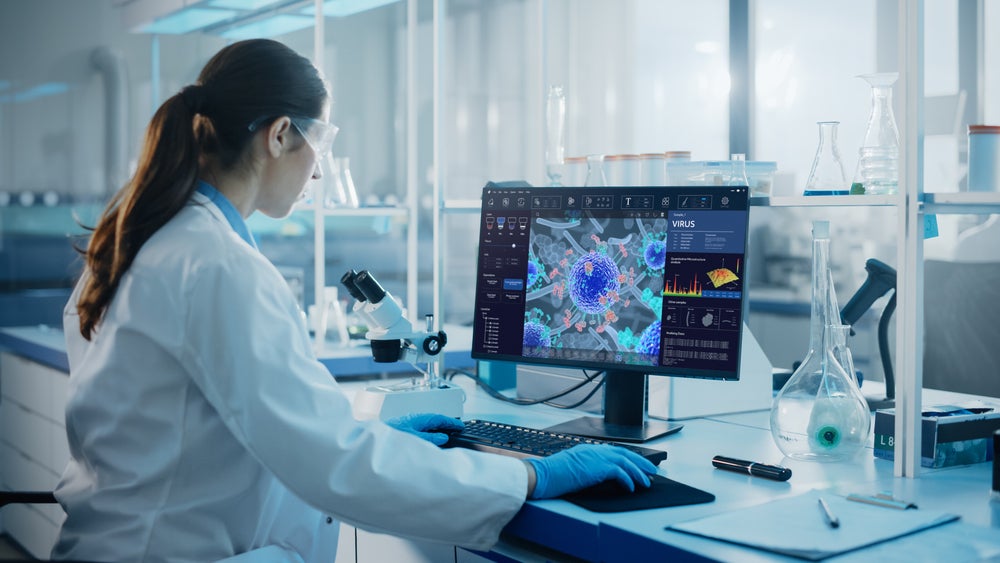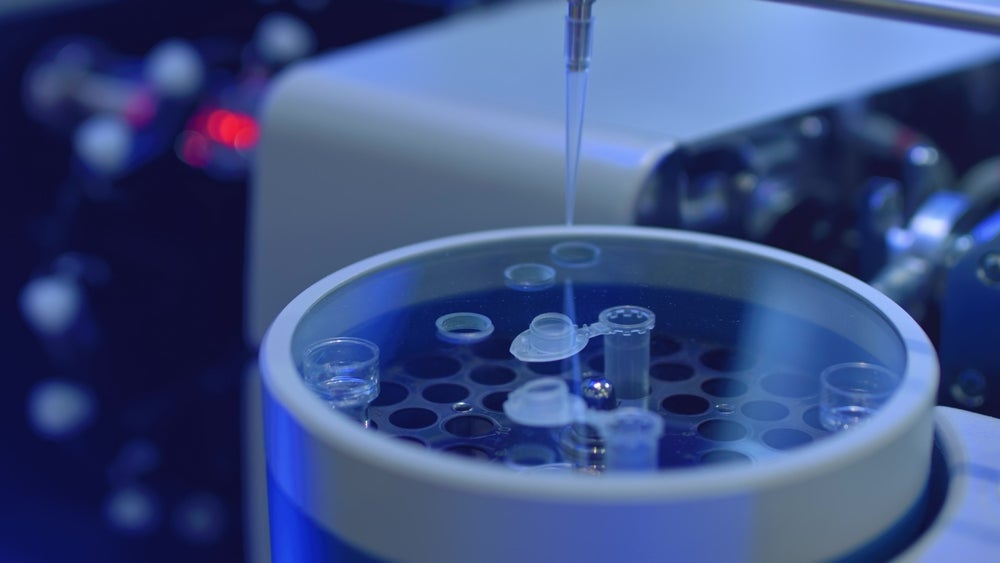The convergence of artificial intelligence. machine learning and materials science advances is transforming the scope of computational chemist roles and skillsets
For decades, computational chemistry has played a central role in the world’s understanding of molecular interactions as it enables researchers to glean insights at the atomic scale that are difficult, if not impossible, to observe in a traditional laboratory setting. Popular methods such as Density Functional Theory (DFT) have helped researchers to do things like model the behavior of electrons or predict the physical and chemical properties of molecules and materials — and all with remarkable accuracy.
Unfortunately, many of these traditional methods are also computationally expensive and time-consuming. Simulating even a single reaction pathway or molecular configuration could take anywhere from hours to days, even on high-performance computing (HPC) systems. These challenges have left computational chemists primarily siloed in academia or R&D departments, distanced from the fast-moving world of industrial product development.
Today that dynamic is changing. The convergence of artificial intelligence (AI), machine learning (ML) and materials science is finally transforming the scope and speed of computational modeling. AI models that are trained on high-fidelity quantum mechanical data can now simulate systems at speeds that are millions of times faster than conventional methods without losing critical accuracy. These new technologies are redefining the traditional definition and role of a computational chemist and opening new doors for innovation across industries like chemical processing.

Computational chemists are seeing their roles expanded and enhanced as AI and other advanced digital technologies proliferate throughout the process industries (Photo: Shutterstock)
From Bottlenecks to Breakthroughs: Speed Enables Scale
The bottlenecks associated with traditional computational methods have historically limited their involvement in industrial applications. Product development teams often work on hurried, compressed timelines that simply do not align with the time that chemists need to test hundreds of catalyst structures or reaction pathways. The time crunch narrows the exploratory space and cuts the chances of identifying novel, high-performing materials.
AI changes this equation. Using ML models trained on databases of DFT-calculated systems, simulations can be run on commodity hardware and scaled across cloud infrastructure. It significantly increases speed and scale for chemists, meaning that thousands of candidate structures, reaction mechanisms, or even material formulations or catalysts can now be screened in the time it used to take to evaluate just one [1].
The speed boost saves time — but it also unlocks new workflows for real-world experimentation. For example, high-throughput virtual screening capabilities enable chemists to rank-order candidates for synthesis, strategically narrowing down the list of possibilities before entering the lab. This dramatically increases the efficiency of experimental resources, reduces waste and speeds up time-to-market.

New technologies, including AI/ML, high-throughput experimentation and quantum computing, are reducing the time required for research and development of new catalysts, active ingredients, smart materials and more (Photo: Shutterstock)
Evolving Role of the Computational Chemist
As AI-driven tools become more prevalent, computational chemists will need to evolve their traditional skillsets and responsibilities. Once a largely theoretical discipline, computational chemists are now being involved in industrial product innovation pipelines, effectively redefining and positioning their role as a key contributor to the future of product development and discovery for the first time.
A critical and emerging skillset for today’s chemists is competency in curating and interpreting large datasets. From collecting, cleaning and contextualizing data to training predictive models, validating model outputs and evaluating uncertainty, it will be paramount to ensure that these new AI-driven results remain trustworthy and reproducible compared to conventional methods.
Fluency in scripting and automation is also no longer optional as these skills enable rapid iteration, streamlined experimentation, and seamless collaboration across existing and future computational platforms. Chemists should look to master languages such as Python to engage with workflow management systems, and learn to work well within cloud-computing environments.
Perhaps one of the most important skills is the ability to interrogate AI models for interpretability and physical validity. Unlike traditional physics-based models, many AI models behave like “black boxes,” [2] and can generate results that appear plausible but lack scientific proof. In response, chemists must apply, or in some cases develop, interpretability techniques that ensure model predictions align with known chemical principles and remain compliant with regulatory and scientific standards.
Equally critical is the ability to clearly translate AI-generated technical insights into actionable recommendations for key stakeholders, including but not limited to experimentalists, engineers and business decision-makers. Yes, simulation results need to be accurate and remain compliant with scientific regulations, but most importantly they must be effectively communicated so as to ensure alignment with broader product and commercial objectives.
This evolving role reflects a shift toward a new identity, one that might be better described as a computational product engineer. One thing is for sure: the next generation of the computational chemist is a professional who leverages modeling and AI to directly inform and accelerate product innovation.
Organizational Impact and Adoption Challenges
Major shifts caused by new and transformative technologies, like integrating AI into computational chemistry workflows, create both cultural and technical challenges.
Data scarcity and quality is challenge number one. Training models require high-quality datasets, and unfortunately many organizations struggle to harness existing experimental and simulation data, most likely because it is in various different formats or not digitally archived properly. For those looking to integrate AI effectively, know that building robust datasets will require cross-functional coordination and there should be special attention paid to adherence to data governance standards [3].
Cultural resistance remains a barrier to adoption because computational chemistry has historically been viewed as a supporting discipline rather than a central innovator. Transitioning chemists from behind-the-scenes players into front-line roles within product development requires new cross-team and cross-disciplinary collaboration. Establishing the new organizational structure requires a significant amount of resources that includes investment in training and necessary infrastructure.
The good news is that industry leaders recognize these challenges and have already begun responding and efforts to harmonize data formats and improve interoperability are underway. For example, hybrid modeling approaches, which blend first-principles physics simulations with AI predictions [4], are increasingly being used to enhance interpretability without sacrificing predictive power.
The Future of AI in Computational Chemistry
As the role of the computational chemist evolves, the future landscape of computational chemistry is also sure to see significant transformation in the coming years.
One major development to point out is an increase in hybrid models that combine first-principles simulations with the speed and flexibility of machine learning. These models are delivering both accuracy and interpretability, offering more robust predictions across diverse chemical systems.
Federated learning is also gaining traction [3] as a technique to collaboratively train AI models across organizations — without exposing proprietary data. This is particularly important to players in the industrial space where data confidentiality and intellectual property protection are paramount.
Finally, AI is increasingly being applied to ethical and sustainable chemistry initiatives. Models can now simulate things like environmental impact, degradation pathways and lifecycle metrics, which support the development of greener processes and materials. Looking ahead, computational chemists have the opportunity to make significant impacts on the future of sustainable innovation.
Being More Hands-on with Innovation
AI is not replacing computational chemistry — it is expanding it. By accelerating simulation times and democratizing accessibility, AI is transforming the role of the computational chemist from a theoretical modeler to a hands-on, critical innovator in the product development lifecycle.
For professionals in chemical processing industries, this transformation represents both a challenge and an opportunity. Embracing AI-enhanced modeling tools, while investing in interdisciplinary collaboration and evolving skillsets, will be the key to unlocking faster, sustainable, and more impactful innovation.
In the end, computational chemistry is no longer limited to modeling reality. With the help of AI, it is increasingly capable of shaping it. ♦
Edited by Mary Page Bailey
References
- Keith, J. A., others, Combining Machine Learning and Computational Chemistry for Predictive Insights Into Chemical Systems, Chemical Reviews, Vol. 121, Issue 16, July 2021, https://pubs.acs.org/doi/10.1021/acs.chemrev.1c00107.
- Hassija, V., others, Interpreting Black-Box Models: A Review of Explainable Artificial Intelligence, Cognitive Computation, Vol. 16, pp. 45–74, August 2023, https://link.springer.com/article/10.1007/s12559-023-10179-8
- Olawade, D. B., others, Artificial Intelligence in Computational and Materials Chemistry: Prospects and Limitations, Chemistry Africa, June 2025, https://link.springer.com/article/10.1007/s42250-025-01343-8.
- Ding, H., others, Survey on Recent Process of AI for Chemistry: Methods, Applications and Opportunities, Frontiers of Computer Science, Arxiv preprint, Feb. 2025, https://arxiv.org/abs/2502.17456v1.
Author
 Joshua Young is a senior application scientist at the U.S. branch of Japanese AI startup Matlantis, which uses atomic-scale AI-based simulation to accelerate global materials discovery, specializing in computational materials research to drive adoption of the Matlantis platform. With expertise in materials informatics, density functional theory (DFT), and ab initio molecular dynamics (AIMD), he designs and probes materials across scales for energy and nanoelectronics applications. At Matlantis, Joshua helps clients integrate AI-powered atomistic simulations into R&D—optimizing catalysts, designing battery electrodes, and exploring complex polymers—and translate cutting-edge computational modeling into industrial impact.
Joshua Young is a senior application scientist at the U.S. branch of Japanese AI startup Matlantis, which uses atomic-scale AI-based simulation to accelerate global materials discovery, specializing in computational materials research to drive adoption of the Matlantis platform. With expertise in materials informatics, density functional theory (DFT), and ab initio molecular dynamics (AIMD), he designs and probes materials across scales for energy and nanoelectronics applications. At Matlantis, Joshua helps clients integrate AI-powered atomistic simulations into R&D—optimizing catalysts, designing battery electrodes, and exploring complex polymers—and translate cutting-edge computational modeling into industrial impact.